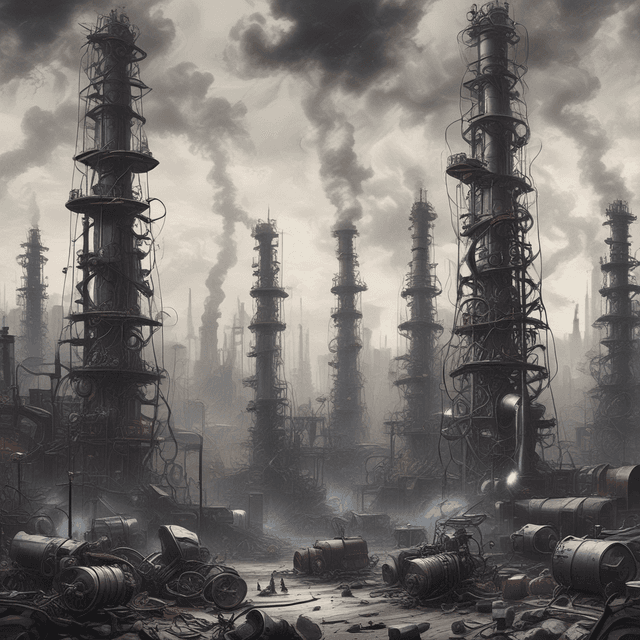
| Genre | Experimental, avant-garde |
| Impact | Influence on alternative and experimental music |
| Origin | 1950s |
| Pioneers | |
| Subgenres | Industrial metal • Industrial folk |
| Characteristics | Abrasive, mechanical sounds, social and political themes |
Industrial music is an experimental genre of electronic music and rock music that originated in Europe in the 1950s. It is characterized by the wildly unconventional use of sounds and noises derived from industrial machinery, manufacturing processes, and the harsher aspects of modern urban life. Industrial music often features abrasive, mechanical, and dystopian sonic textures, as well as lyrics with sociopolitical themes critiquing industrialization, consumerism, and authoritarian power structures.
The genesis of industrial music can be traced to the early 1950s, when a number of avant-garde European composers began incorporating sounds of industry and technology into their experimental works. Pioneers included:
These early industrial experimentalists were influenced by the mass industrialization and urbanization occurring across post-war Europe, as well as the philosophical writings of thinkers like Marshall McLuhan and Walter Benjamin. Their music sought to comment on and reflect the dehumanizing impacts of technology on modern society.
By the 1960s, industrial music had begun to coalesce into a distinct genre, with artists like Throbbing Gristle, Cabaret Voltaire, and Einstürzende Neubauten emerging from the underground scenes of London and West Berlin. These groups crafted a harsh, abrasive, and confrontational sound that drew from industrial noises, musique concrète, and the radical politics of the counterculture.
Records like Throbbing Gristle's "Second Annual Report" (1977) and Einstürzende Neubauten's "Kollaps" (1981) incorporated distorted factory sounds, metallic percussion, and angry, dystopian lyrics to create an intense, visceral listening experience. The band Laibach in particular gained notoriety for their intense, militaristic performances and their subversive use of totalitarian imagery.
As the 1970s progressed, industrial music began to gain more mainstream recognition and commercial success, especially with the emergence of industrial metal acts like Ministry and Nine Inch Nails. These groups incorporated industrial's sonic signatures - heavy, rumbling percussion, distorted guitars, and mechanized textures - into a more accessible hard rock/heavy metal framework.
Concurrently, other industrial artists began experimenting with more melodic, ambient, or acoustic approaches. Groups like Nurse With Wound and Current 93 incorporated industrial sounds and themes into folk, drone, and neoclassical compositions. This diversification of the genre allowed industrial music to find new audiences and influence a wide range of alternative and experimental music.
Even as industrial gained popularity, it retained its countercultural edge. Artists often used shock tactics, confrontational performances, and subversive politics to maintain industrial's outsider status, even as it became part of the mainstream rock and electronic landscapes. This balance of popularity and radicalism has defined industrial music's legacy and ongoing impact on the alternative music scene.